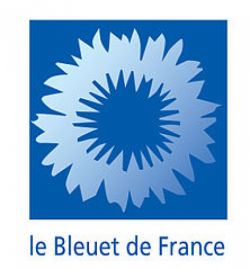Bleuet de France

In France, the bleuet de France is the symbol of memory for, and solidarity with, veterans, victims of war, widows, and orphans, similar to the British Commonwealth remembrance poppy. The sale of "bleuet de France" badges on 11 November and 8 May is used to finance charitable works for those causes.
In the language of flowers, the cornflower symbolizes delicacy and timidity, and indicates that a message has a pure, innocent, or delicate intention.
The origin of the badge dates to 1916. It was created by Suzanne Lenhardt, head nurse in Les Invalides, and Charlotte Malleterre. Lenhardt was the widow of a Colonial Infantry captain killed in 1915, and Malleterre was the sister of Général Gustave Léon Niox and the wife of Général Gabriel Malleterre. They were both moved by the suffering endured by the war wounded for whom they were responsible and, needing to provide them with some activity, organized workshops where cornflower badges were made from tissue paper. These were sold to the public at various times, with the money collected providing the men a small income. They gradually became a symbol of the rehabilitation of soldiers through labor.
On 15 September 1920, Louis Fontenaille, the president of Mutilés de France (fr), proposed making the blueut the eternal symbol of those who died for France. This had the support of the FIDAC (Federation Interalliee des Anciens Combattants) (pl).
In 1928, after French President Gaston Doumergue gave his patronage to the bleuet, sales gradually spread countrywide. By 11 November 1934, 128,000 flowers were sold. From 1935, the French government officialized the sale of bleuets on Remembrance Day.
In 1957, a second commemorative day was denoted for 8 May, VE day, the anniversary of the surrender of Nazi Germany in the Second World War.
© Symbols.com
